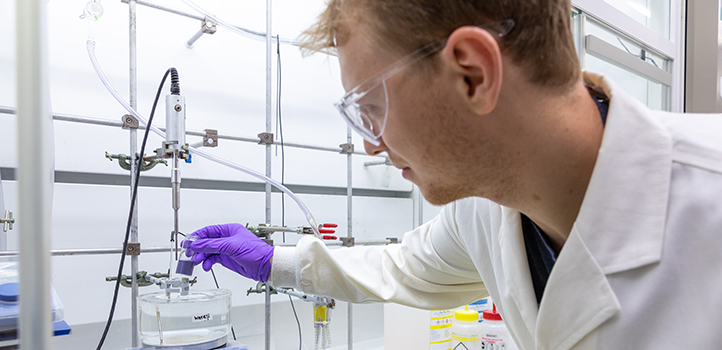Feb 18 2020
Energy storage technologies with higher efficiencies can be achieved by using an organic semiconductor photocatalyst that considerably improves the production of hydrogen gas.

The team’s hydrogen evolution photocatalysts (HEPs) exhibited hydrogen evolution rates an order of magnitude beyond what is currently achievable with single-component inorganic HEPs. Image Credit: KAUST.
The burning of fossil fuels has been causing hazardous levels of climate change, urging the need for cleaner renewable energy sources. Most certainly, solar energy is the most copious renewable energy source. However, to unleash its potential, solar energy must be able to be stored for later use.
A standard technique for solar energy storage is to use hydrogen evolution photocatalysts (HEPs) in the chemical bonds of molecular hydrogen. At present, a majority of the HEPs are developed from single-component inorganic semiconductors. These can absorb light only at ultraviolet wavelengths, thus restricting their potential to generate hydrogen.
Researchers headed by Iain McCulloch from the KAUST Solar Center, in collaboration with scientists from the United Kingdom and the United States, have now created HEPs from two different semiconducting materials. They combined these materials with organic nanoparticles that can be tweaked to absorb more of the visible light spectrum.
Traditionally, inorganic semiconductors have been used for photocatalytic applications. However, these materials absorb primarily UV light, which comprises less than five percent of the solar spectrum. Therefore, their efficiency is limited.
Jan Kosco, Study First Author, KAUST
Initially, the researchers employed a technique known as miniemulsion, which involves emulsifying a solution of the organic semiconductors in water by using a stabilizing surfactant. Then, the emulsion was heated to drive off the solvent. The remnant was surfactant-stabilized organic semiconductor nanoparticles.
The researchers changed the surfactant to be able to manipulate the nanoparticles’ structure, thus modifying their structure from a core-shell to a mixed donor/acceptor structure. The blended structure enabled them to insert a heterojunction between the layers of the nonfullerene acceptor and donor polymer.
Both structures absorb light at the same rate. but in the core-shell structure, only photogenerated holes reach the surface; however, in the mixed structure, both holes and electrons reach the surface of the nanoparticles, resulting in enhanced generation of hydrogen.
Jan Kosco, Study First Author, KAUST
The hydrogen evolution rates of the HEPs were found to be an order of magnitude more than what is realizable at present with single-component inorganic HEPs. This forms the basis for next-generation energy storage technologies.
We are currently studying the performance of nanoparticles formed from different blends of semiconductors to better understand their structure-activity relationships. We are looking to design nanoparticle photocatalysts for other photocatalytic reactions, such as oxygen evolution or carbon dioxide reduction.
Iain McCulloch, Researcher, KAUST Solar Center
A shift in shape boosts energy storage
KAUST researchers are studying the performance of nanoparticles formed from different blends of semiconductors to better understand their structure-activity relationships. Video Credit: KAUST.